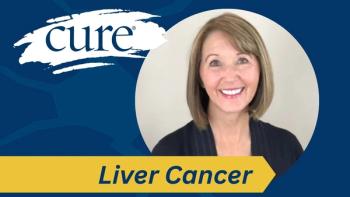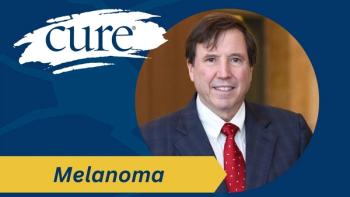
Full-Time Advocate: Bringing SABCS cutting-edge information back home
A look at how two-time breast cancer survivor Joan Venticinque got her start in advocacy and where she thinks the future may take her.
For Joan Venticinque, 56, breast cancer advocacy is a full-time job, but she tries to fit some graphic design work in her week to make a living.
Stanford
University
Comprehensive
Cancer
Center
Stanford
California
,
Palo Alto
Venticinque, a two-time breast cancer survivor, serves as a volunteer patient navigator for in . In addition, she volunteers at Breast Cancer Connections in , one of the oldest breast cancer support organizations in the country, where she works on the helpline, serves as a buddy for women who have had similar diagnoses to her, and does community outreach and marketing to raise funds. She also works on a Palo Alto Medical Foundation committee that created a survivorship care plan currently being used for breast and prostate cancer survivors. And the list goes on.
meeting
California
Venticinque is attending SABCS for the second time as an advocate through the Alamo Breast Cancer Foundation, which has been providing scholarships for breast cancer survivors to attend the symposium for a decade. Each advocate is required to attend all SABCS sessions and write on one “hot topic” for material the foundation distributes after the to organizations around the world. Venticinque will be one of 36 advocates who will attend this year to take back the latest updates to the hundreds of women she interacts with in .
“My dream is to be a paid patient navigator where I am with a patient from diagnosis through survivorship,” she says. “To be that person that can help guide them through the medical maze of getting well. In my volunteer job at Breast Cancer Connections, I have served as that person, especially for the poor and underserved.”
Washington
D.C.
,
But Venticinque says the political aspects of the disease must also be part of her work, and she has been to , twice this year to lobby on behalf of breast cancer. She says her goals at this year’s SABCS will be to gather as much cutting-edge information as possible since this is what women want.
“They want information on triple negative breast cancer and also on metastatic treatments,” she says.
Venticinque was diagnosed the first time in 1998 with ductal carcinoma in situ (DCIS), a common form of non-invasive breast cancer, in the left breast and then again in 2003 with an invasive tumor in the right breast, at which time she had bilateral mastectomies.
“I learned quickly what being a cancer patient was all about,” she says. “Cancer, and the fight against it, is full of unknowns. There are not too many black and white choices in cancer treatment, but lots of shades of gray.”
Read more of CURE's coverage of the 31st annual San Antonio Breast Cancer Symposium at https://www.curetoday.com/conference/sabcs




